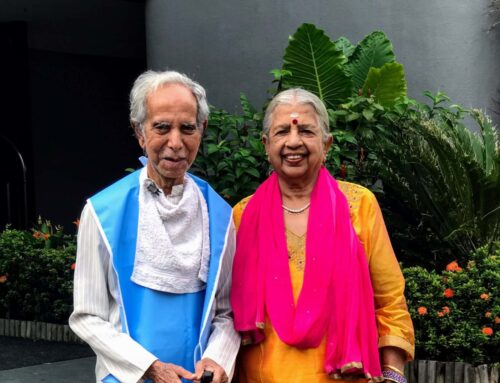A dose of Indian state support will keep drug firms healthy
Shoba Narayan
Indians are not pill poppers. Or so I thought until a report in the Lancet Infectious Disease Journal linked an antibiotic-resistant “superbug” to India. In a somewhat dubious compliment the new “genetic mechanism” is even named after us: New Delhi metallo-beta-lactamase 1 or NDM1. The report, published in August, caused uproar in the Indian and international medical community. The Indian health ministry has appointed a committee that will frame and monitor policy on antibiotic use.
Hard as it is to believe, India really doesn’t have a comprehensive framework on how to prescribe, control and monitor the use of pharmaceutical drugs, including antibiotics. As a result, Indians self-medicate; in large numbers it seems, according to the Lancet. This is contrary to my own experience. Everyone I know of my parents’ generation hates popping pills. My father complains bitterly about problems he has sleeping but refuses to be persuaded to take a sleeping pill. My mother has a veritable array of lotions, unguents and Ayurvedic oils by her bedside. But no pills.
She prefers Amrutanjan for headaches, Vicks VapoRub for colds and Tiger Balm for aches and pains. No wonder Indian pharmaceutical companies had to look abroad for their generics businesses, I thought. The Indian pharmaceutical industry is in robust stock-market health, having outperformed the broad market index substantially over the past two years. But it is also in the throes of intense self-reflection on how to prevent chronic degeneration, and in the coming months will attempt to reinvent itself to remain relevant in these changing times.
A couple of weeks ago, the health minister Ghulam Nabi Azad convened what was dubbed a “high-level” meeting with the captains of the pharmaceutical industry. The springboard for the meeting was the so-called “sell-outs” among Indian drug companies to foreign multinationals. Piramal, for instance, recently sold its domestic formulations division to the US-based Abbott for an up front payment of US$2.2 billion (Dh8.08bn) and additional cash influx of $400 million a year for the next four years starting next year.
Shantha Biotech and Dabur Pharma, too, have sold controlling stakes to the France-based Sanofi-aventis and the German company Fresenius Kabi, respectively.Some Indian firms, such as Lupin Pharmaceuticals, have followed a different route to the same result by acquiring foreign-branded pharmaceutical businesses. Recently, Sun Pharma bought a controlling stake in the Israeli company Taro Pharma, after a bitter three-year battle.
Taro, which makes topical dermatological products, was seen as the perfect niche branded business that Sun needed to complement its existing stable of products. So far, the pharmaceutical industry has been pretty much going it alone. The Indian government left them to fend for themselves. Mr Azad wants to change all this. He assured the industry chief executives the Indian government would help them address urgent and long-term issues regarding what the industry called “eking out profits in an increasingly competitive world”.
In turn, Mr Azad wanted the companies to supply low-cost drugs to the poorest of poor Indians. The reason for all this angst, both in government and industry circles, is the fact that the industry needs to change course. In the next three years, several products are coming off-patent in the West, thus ending the ride that Indian drugs companies have enjoyed on the coattails of generics. Now that sales of generic drugs are expected to peak worldwide, the industry is being forced to look at new revenue streams.
At the pharmaceuticals industry get-together held in Hyderabad last month, the buzz was all about CRAMS (contract research and manufacturing services) and branding Indian drugs. According to several analysts, drugs industry growth is largely being driven by branded generics, which are expected to generate almost $8bn in sales this year and double that by 2015. Concomitantly, the global market for CRAMS is expected to increase from a value of $26.2bn to $43.9bn, according to the numbers bandied about at the conference.
The other driver is something I see everyday: more and more Indians are falling prey to chronic illnesses and lifestyle diseases such as diabetes and hypertension. They need branded drugs they can trust and use long-term. Until now, affluent Indians used to buy medicines abroad and bring them home. Nowadays, as Indian brands gain credibility, many of them buy their drugs at their local pharmacy. I used to bring all my children’s medication from the UK or the US, either when I travelled abroad or when relatives and friends travelled they would buy them and bring them back for me.
Now that I have tried branded Indian remedies for my children and found them to be effective, I don’t mind paying first-world prices for these medicines. The point is that there is a segment of Indians who are willing to pay for branded drugs and this segment is growing. Indian pharmaceutical companies have realised their domestic businesses will grow just when their foreign businesses are showing signs of strain.
If only one of these pharma hotshots can figure out a way to prevent Indians from self-medicating, particularly with antibiotics. We do so many things wrong on that front: stopping halfway through the course, choosing our own antibiotic based on past experience rather than go to the doctor. I am ashamed to say that since moving back to India, I’ve done all this, too. The health ministry’s committee that will frame policies on antibiotic and other drugs has its work cut out.
Shoba Narayan is a journalist based in Bangalore and the author ofMonsoon Diary




Leave A Comment